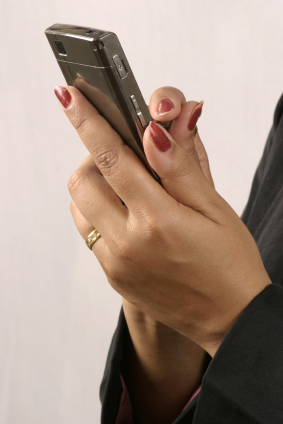Clinical pathology laboratories may soon handle lab test orders entered by scribes on behalf of physicians
Along with the growing adoption of electronic medical record (EMR) systems comes robust demand for a new healthcare job: scribes! That is a bit ironic, since many advocates of EMRs believed that physicians would do the primary entry. In fact, the acronym CPOE (computerized physician order entry) was coined to describe this process.
The trend of hiring scribes to interpose between physicians and EMRs is an unanticipated consequence of wider adoption of EMR and EHR (electronic health record) systems. Wider utilization of scribes will directly affect clinical laboratories and pathology groups, because the scribe generally becomes the individual to place orders for clinical laboratory tests at the direction of physicians and track receipt of the lab test results into the EMR.

The trend of hiring scribes is gaining momentum. In Orange, California, a company called ScribeMD, a subsidiary of Emergency Medical Services of Orange County (EMSOC). already claims to have 50 scribes working on 13 physician shifts daily. Linda Pierog, who is Practice Manager for EMSOC, recently told a reporter from Modern Healthcare that scribes have an essential role in emergency room settings. She said that a scribe does more than a transcriptionist, because the scribe helps physicians fully document every detail of a patient encounter by entering relevant data in the EMR.
ScribeAmerica, of Lancaster, California, was co-founded in 2003 by CEO Michael Murphy, M.D. Murphy says there are three main companies offering scribe services, along with several smaller firms. Collectively, Murphy estimates that 150 hospitals are staffed with 2,000 scribes. He thinks that another 40 or 50 hospitals directly employ 500 more scribes. If these numbers are accurate, it means that almost 5% of American hospitals now use scribes in their emergency rooms to enter patient encounter data into EMR and EHR systems.
Murphy says that about half the individuals working as scribes are students in pre-med, pre-nursing, physician assistant, nurse practitioner, and similar healthcare educational programs. He told Modern Healthcare that the scribe position is “…now generally regarded as being the best pre-med job.”
In parallel with hospital use of scribes, private medical groups are also hiring scribes. Two dynamics encourage use of scribes in these settings. First, medical groups are learning that scribes can increase physician productivity. Second, scribes are a way to get around the complexity of using an EMR because often these systems are not designed to support the physician’s practice habits and long-established work flow. A third reason why scribes can contribute in a physician group is that many of the soon-to-retire baby boomer physicians don’t want to transition from a paper-based health records system to an EMR. By using scribes, medical practices can support these experienced physicians while still getting all the patient encounter information into the EHR.
And how much does it cost to employ a scribe? Sarah Esquibel, Chief Operations Officer for ScribeAmerica, told Modern Healthcare that starting rates for a new scribe are about $10 per hour. Experienced scribes earn about $14 per hour.
Physician groups report the use of scribes can significantly boost physician productivity. One family practice group in Fayetteville, North Carolina, says that, by using scribes, its physician partners now earn twice the income of the average family practice physician. Randall Oates, M.D., who founded Soapware, an EHR system development company in Fayetteville, declares that, “The bottom line, and I’ll make it real simple, the family practitioner has only to see one extra patient every three hours to cover the cost of the remote scribe and the technology.”
Dark Daily observes that the rising demand for scribes shows how adoption of an EMR or EHR system creates new opportunities to gather detailed patient encounter data in real time, in a manner that can increase physician productivity and accuracy. CPOE may still be a long way from reality, but the interim steps toward this outcome are happening now.
Further, this trend illustrates how the American healthcare system is undergoing dynamic change. Clinical laboratories and pathology groups should keep a watchful eye on the increased use of scribes by hospitals and physician groups, since they will often be the individuals preparing and transmitting laboratory test orders at the direction of their physicians.
Related Information:
Getting It In Writing: Docs Using Scribes to Ease the Transition to EHRs
Experts Available to Discuss Docs using scribes to ease EHR transition




Not only scribes, but Cleveland Clinic is posting a job with the title of “Meaningful Use”.